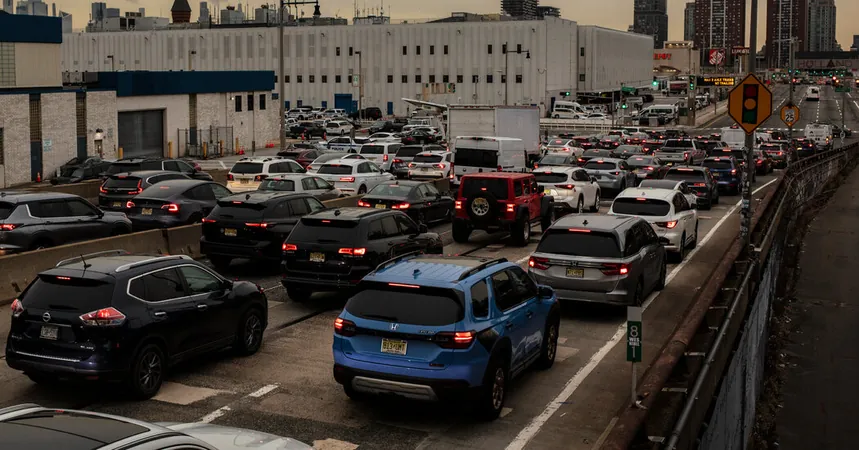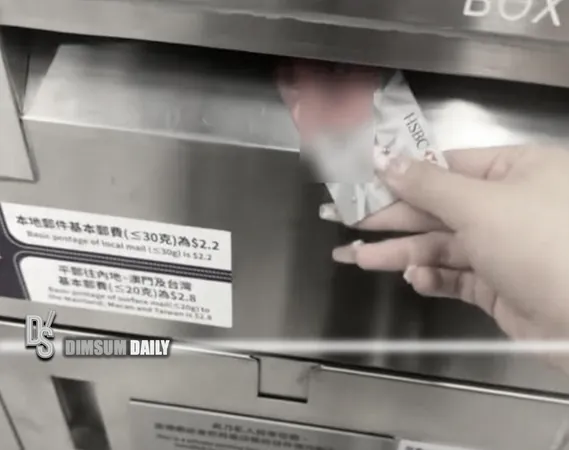
New York's Congestion Pricing: A Bumpy Commencement During Morning Rush Hour
2025-01-06
Author: Wei
Introduction
As New Yorkers brace for the impact of the city's unprecedented congestion pricing scheme, the first Monday rush hour has begun to reveal both growing pains and potential benefits of this controversial initiative aimed at reducing traffic and pollution in Manhattan.
Launch and Initial Response
Launched over the past weekend with minimal disruption, the tolling program is now facing real-world challenges as commuters return to work following holiday vacations. Traffic data from INRIX, a leading transportation analytics firm, showed an average speed of just 12 miles per hour within the tolling zone at 8 a.m. — a slight decrease from the speed observed on the first non-holiday Monday of the year.
Tolling Structure and Commuter Reactions
Under this new program, which stretches from 60th Street to the southern tip of Manhattan, drivers are grappling with the new financial realities. Shanoi Martinez, a commuter from Teaneck, New Jersey, opted to leave home early to secure a parking spot just outside the toll zone to avoid a $9 charge for a single block. Still, his workaround led to increased costs overall as his new garage charges $4 more than his usual parking spot.
The tolls, which currently set most car fees at $9 for entering the congestion zone — down from the initially proposed $15 — could rise to $12 by 2028 and $15 by 2031. While already feeling the pinch, many drivers and businesses fear the long-term financial implications, as these tolls—that fund improvements in public transport—could indirectly hike prices for services within the congested areas.
Business Impact
Business owners are reporting fewer customers. A gas station attendant in Long Island City noted it was uncharacteristically slow compared to typical Monday mornings.
Ride-share Concerns
Concerns have also surfaced among ride-share drivers, like Angel Rodriguez from Washington Heights, who finds the congestion pricing especially alarming despite the fact that it's passengers who pay the tolls. "It’s not good; it’s going to cost me mucho dinero," Rodriguez lamented, underscoring fears that customers will shy away from entering the congestion zone.
Criticism and Support
The new system has its critics; various stakeholders, including New Jersey officials and local unions, are questioning the fairness of the tolling scheme, which they argue could disproportionately impact low-income communities while shifting traffic problems to surrounding neighborhoods.
Amid these tensions, supporters of congestion pricing cite successes in similar schemes around the globe in cities like London, Stockholm, and Singapore. For instance, London's congestion zone has seen an 18% reduction in vehicles entering the area, leading to improved air quality and decreased traffic delays. However, they too faced public backlash before acceptance grew over time.
Funding for Public Transportation
In New York City, officials maintain that funds collected will finance vital upgrades to an aging subway and bus infrastructure, which has faced decades of deferred maintenance and degradation. The Metropolitan Transportation Authority (MTA) is poised to secure up to $15 billion in bond financing using the revenue generated by congestion pricing, which is expected to contribute significantly to restoring the transit system.
Ongoing Legal Challenges
Despite the program’s initiation, legal challenges persist. Following a recent federal court ruling that allowed congestion pricing to move forward, opponents are vowing to continue their fight, highlighting concerns that the financial and environmental burdens will be unevenly distributed.
Conclusion
As the dust settles from its launch, the true impacts of New York's congestion pricing initiative remain to be seen. New Yorkers are now left wondering: will this program ease the city’s notorious traffic woes, or has it sparked yet more contention among commuters, businesses, and officials? Only time will tell if congestion pricing is indeed the strategic solution the city needs or just another hiccup in urban planning efforts.



 Brasil (PT)
Brasil (PT)
 Canada (EN)
Canada (EN)
 Chile (ES)
Chile (ES)
 Česko (CS)
Česko (CS)
 대한민국 (KO)
대한민국 (KO)
 España (ES)
España (ES)
 France (FR)
France (FR)
 Hong Kong (EN)
Hong Kong (EN)
 Italia (IT)
Italia (IT)
 日本 (JA)
日本 (JA)
 Magyarország (HU)
Magyarország (HU)
 Norge (NO)
Norge (NO)
 Polska (PL)
Polska (PL)
 Schweiz (DE)
Schweiz (DE)
 Singapore (EN)
Singapore (EN)
 Sverige (SV)
Sverige (SV)
 Suomi (FI)
Suomi (FI)
 Türkiye (TR)
Türkiye (TR)
 الإمارات العربية المتحدة (AR)
الإمارات العربية المتحدة (AR)